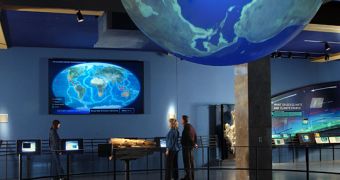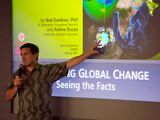We've stumbled upon yet another piece of evidence that, instead of turning us into snobs, Macs "bring science down to Earth" for everyone to understand and appreciate. Recent Apple Science news say that when producers at the American Museum of Natural History needed a next-gen environment to create high-definition Science Bulletins, they looked to Apple for its powerful systems.
Ned Gardiner, senior geographic and ecosystems specialist at the AMNH, has learned to appreciate Apple computers, comparing them with a 300-year-old invention by Van Leeuwenhoek: the microscope. Just like Leeuwenhoek, who "allowed scientists to see things they never could see before," Apple solutions have proven similarly helpful in uncovering the secrets of our planet and translating them into an accessible format using "servers and storage to visualize satellite and other scientific data for high-definition (HD) video productions."
A picture of 17th century Dutch scientist Antony van Leeuwenhoek sits on Gardiner's desk.
The visualizations are part of the museum's Science Bulletins, according to the report, a program launched by the museum's education department in 1997. The data visualizations transform scientific studies into formats that everyone can understand.
AMNH currently uses 18 Mac notebooks and desktop systems, three Xserve G5 servers, and six Xserve RAID arrays (23-terabyte Xsan network via GB Ethernet and Fibre Channel). Think that's enough to turn scientific studies into "stories that speak to everyone?"
"We're translators for the public," says Vivian Trakinski, Science Bulletins executive producer. "We use the science to tell stories that people can understand and appreciate. Viewers are seeing the same data that researchers are gathering and looking at. It's a direct interaction with the evidence."
Macs offer the best solutions for AMNH to create segments by a 12-member team of scientists, animators and producers. Before using Mac-power, the team output its HD graphics and animation content on an SGI Onyx workstation running Vizrt software.

 14 DAY TRIAL //
14 DAY TRIAL // 
